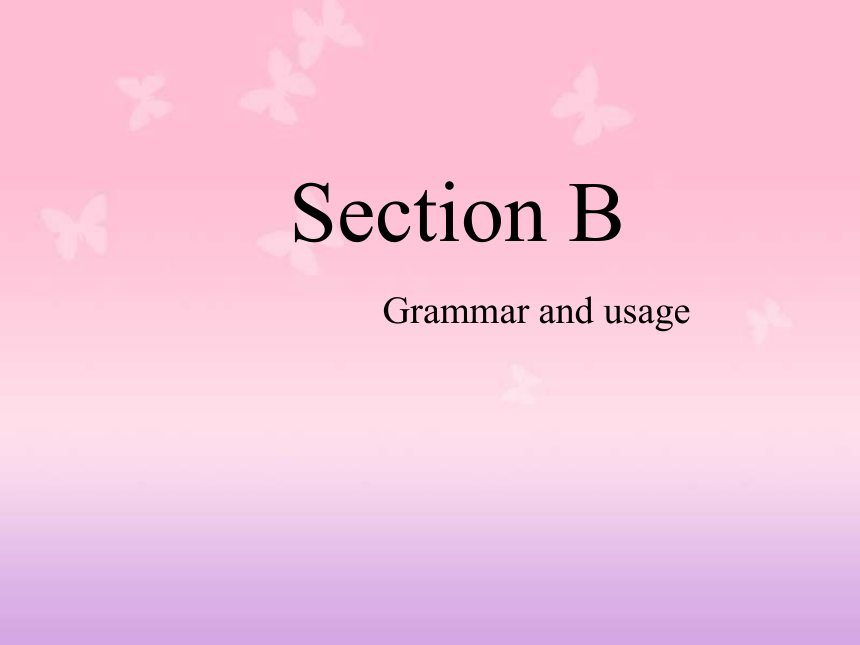(
课件网) Section B Grammar and usage Vocabulary 1. advocate advocate (doing) sth. 提倡(做)某事,主张(做)某事 advocate that… 提倡/主张……(从句的谓语动词用“should+动词原形”,should 可省略) an advocate for/of………的支持者/拥护者 advocate 后接v.-ing做宾语,不能接动词不定式做宾语。 练习:We advocate _____ (seek) a proper solution for these frictions and problems on the basis of equal consultation (协商). seeking 2. belief beyond belief令人难以置信 have belief in 相信……,信任……;怀有……信念 have/hold the belief that... 相信…… It's one's belief that . . . =One's belief is that . . . 某人相信…… believe v. 相信,认为真实 believe sb. 相信某人(的话) believe in sb. 信任某人 believe it or not信不信由你 It is believed that... 人们相信……(It为形式主语) 练习:It is our belief _____ improvements in health care will lead to a more prosperous(繁荣的) economy. that Leading in What are the main types of non-finite verbs To-infinitives, verb-ing forms and verb-ed forms. What can to-infinitives, verb-ing and verb-ed forms be used as in a sentence They can be used as subject, predicative, object, attributive, adverbial and object complement. Working out the rules The to-infinitive often refers to an action that will happen in the future; the verb-ing form, a continuing action; and the verb-ed form, a past action. Generally speaking, the verb-ing form expresses a (n) (1) _____ (active/passive) meaning, while the verb-ed form expresses a(n) (2) _____ (active/passive) meaning. The to-infinitive can be used as the (3) _____ of a sentence. The verb-ing form can be used as the (4) _____ of a sentence. The verb-ed form can be used as the (5) _____ of a sentence. *You can choose more than one answer for each blank. a subject b predicative c object d complement e attributive f adverbial active passive a, b, c, d, e, f a, b, c, d, e, f b, d, e, f 非谓语动词 非谓语动词常指动词不定式、动词-ing和动词-ed形式,在句中可用作主语、宾语、表语、定语、状语和补语。如下: 形式 功能 主语 宾语 表语 定语 状语 补语 动词不定式 √ √ √ √ √ √ 动词-ing √ √ √ √ √ √ 动词-ed √ √ √ √ 动词不定式和动词-ing形式都可以在句中用作主语。 To live is to do something valuable. 活着就是要做一些有价值的事。 Understanding your own needs and styles of communication is as important as learning to convey your preference and emotions. 了解你自己的需要和交流方式与学会表达你的喜好和情感一样重要。 非谓语动词作主语 1.动词不定式作主语时,常常用形式主语it代替,不定式置于句末。 常见句型: It + be +形容词+ (for/of sb.) to do sth. It + be +名词+to do sth. It takes sb. some time to do sth. It's up to sb. to do sth. It is unwise of you to stay up late every day. 你每天熬夜是不明智的。 It is everyone's duty to obey the law. 遵守法律是每个人的义务。 It took her a month to read the novel. 阅读这部小说花了她一个月的时间。 It is up to us to help those in need. 帮助那些需要帮助的人是我们的责任。 2.动词-ing形式作主语时,有时也可以用形式主语it代 ... ...

